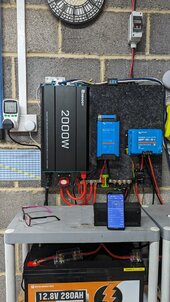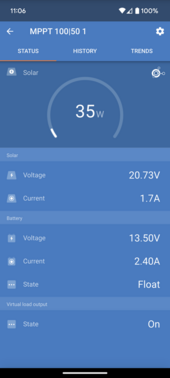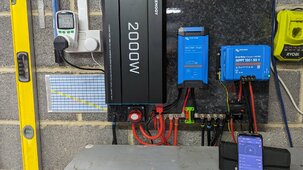As you can see by my setup here I have the Blue Smart charger and an MPPT 100|50.
These are talking to each other via VE.Smart networking.
It's a very cloudy day here in Bristol so there isn't much solar being produced, however....
With the smart charger on the CC rarely goes above 1 watt (although it shows 14 watts because I'd just turned the smart charger off and on again.
When I turned off the smart charger the CC went up to about 35 watts.
The energenie in the top left obviously showed 0 watts.
When I turned the smart charger back on the CC then went down to 14 watts and the energenie fluctuated up and down between 5 and 100 watts(ish).
My question is, which piece of equipment takes priority when deciding on charging?, and can I make it so that the CC takes priority?
I hope all that made sense.

Cheers
These are talking to each other via VE.Smart networking.
It's a very cloudy day here in Bristol so there isn't much solar being produced, however....
With the smart charger on the CC rarely goes above 1 watt (although it shows 14 watts because I'd just turned the smart charger off and on again.
When I turned off the smart charger the CC went up to about 35 watts.
The energenie in the top left obviously showed 0 watts.
When I turned the smart charger back on the CC then went down to 14 watts and the energenie fluctuated up and down between 5 and 100 watts(ish).
My question is, which piece of equipment takes priority when deciding on charging?, and can I make it so that the CC takes priority?
I hope all that made sense.

Cheers





